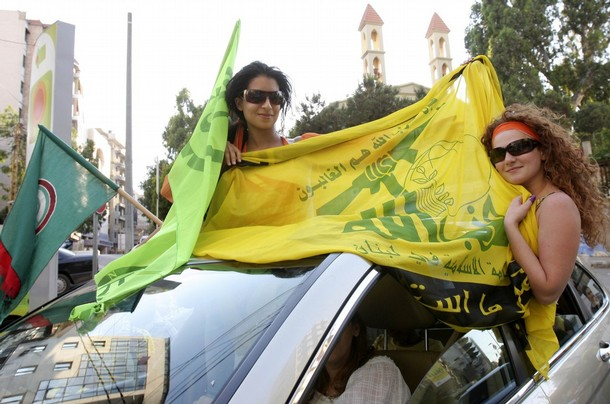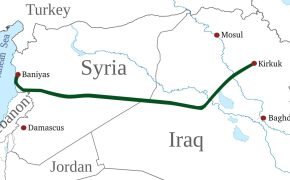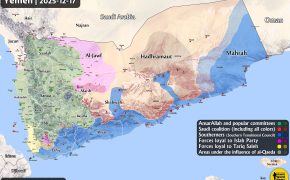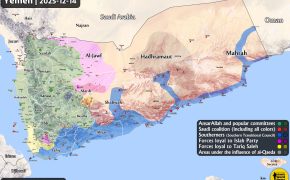Recently Visited Lebanon: Shia Hezbollah, the Sunni PM Hariri, and the Christian President Aoun Are All Part of the Fabric of Lebanese Society

By Muhammad Ali Carter
Robert Carter is an English journalist and political commentator based in London, UK. Robert, who also goes by his Muslim name, Muhammad Ali Carter, specialises on Middle Eastern culture, politics and history as well as the current affairs of the global Muslim world.
e last time I was in Lebanon was in August 2014 when the battle for Arsal first began. Arsal, a small town in the north eastern part of Lebanon located near the Lebanon-Syria border, had just been overrun by a coalition group made up of ISIS & Nusra fighters, seeking to snatch the town and set into motion their deluded dream of an intolerant Salafist caliphate in Lebanon similar to that seen across half of Syria & Iraq.
The terrorist fighters surrounded several Lebanese army checkpoints, catching them off guard. Once they entered the town they stormed the local police station, capturing 16 policemen and taking them hostage. The town subsequently fell to the terrorists and two soldiers, which had also been captured by the terror gang, were thankfully released later that same day; by sundown on the second day of fighting, at least 8 soldiers were reported dead, numerous civilians killed or wounded and at least 30 terrorist gunman also killed before they secured the town under Salafi Islamist control.
It was a tense time to be in Lebanon. The Syrian war was at its bloodiest peak and many spectators at that stage still believed a defeat for Assad was possible. Now, with Arsal crawling with terrorists, many in Lebanon feared that they could be seeing the beginning of what many had predicted, that the dreadful Syrian war would spread into Lebanon – turning the country back to a similar state it had been during the blood soaked sectarian years of the 70’s and 80’s. I myself was currently allotted in the capital city Beirut, I had spent most of my trip visiting family and exploring Lebanon’s Southern areas known as Jabal Amel. Locals would talk about what was happening and work themselves up into quite a frenzy. The typical, friendly and traditionally laid back locals were presently nervous and suspicious; anti-Salafi sentiment was high – I saw conservative looking Sunni Muslim men with beards and misbahas being bullied as they walked down the street or got stuck in traffic on the main roads by more the secular Beirutis. “Sho ya Salafi, are you satisfied now your friends have come?” one driver barked in Arabic as his car stopped next to a conservatively dressed Muslim family in a car opposite mine. The following day I was strolling around downtown Beirut, exploring the various religious and historical sites, something which Lebanon is highly famous for, when I stumble across a beautiful old Christian church which appeared to have religious Byzantine era fresco paintings all around the internal walls. I couldn’t resist asking to enter and have a good look around, however, the door watchman seemed less impressed that I was an eager western tourist fascinated to take a look at his religious heritage site – he was more occupied in interrogating me as to why a non-local white guy with a scruffy beard and poor Arabic wanted to come into his church and take pictures. “You will probably bomb the place” he muttered to himself after I managed to negotiate my way inside, to just have a quick look. Then I made a rooky error, I pulled out my camera and tried to snap a quick pic but I was being watched closely and was heckled down by the doorman and told to leave. This was not the right moment for an untimely guest, such as me, to push the limits of the local hospitality. People were scared and rightly so; the Christian doorman was old enough to have seen the effects of a sectarian war ravage his country once before, now the same was happening again just next door in the far bigger Syria, only this time, the conflict has become famous for non-local ‘western jihadists’ participation.
It is very fitting that, by some coincidence, I should return to Lebanon at the exact same moment to witness the Lebanese army achieved its final victory against the last remaining terrorists still holding onto land in Lebanon, the last time I was in Lebanon I witnessed the same terrorists enter Lebanon officially for the first time, I watched as they took over Arsal, now I watch as they waver and the ‘Battle for Arsal’ comes to a close. Therefore, I have the unique opportunity to compare the local mentality at these two key moments in Lebanon’s very recent history. Certainly, things are much calmer now. The Lebanon I know and love has returned to its natural welcoming and hospitable self.
The Lebanese army has performed spectacularly well under the circumstances. With poor experience, a lack of proper investment and modern equipment, the Lebanese Armed Forces (LAF) have still managed to succeeded in stemming the flow of suicide bomber and car bomb attacks whilst also busted numerous terror cells active inside Lebanon, fighting off unruly Nusra sympathising anti-establishment armed groups in Tripoli and simultaneously maintaining an overall peace in a religiously divided country. Despite its short comings, it is one of the only Lebanese institutions which actually works regardless of the other crippling aspects of Lebanese sectarian politics blocking the rest of the country from working properly. This fact we must recognise.
Lebanon’s western allies, such as the United States, were slow to offer any real practical support to the Lebanese Armed Forces (LAF) in the form of military assistance or weapons shipments over the past few years yet these same allies were very quick to publicise their “long, long relationship”, as President Trump put it, following the LAF’s rapid success in the recent military operation against Daesh near Arsal. The problem, however, is not just the fact that the US has failed to support the Lebanese army in the ways that it claims to have done so since the Syrian war first began and the dreadful Daesh (Arab acronym for ISIS) came into existence but the fact that the US can’t administer the facts on the ground in Lebanon – highlighted stupendously well by Trump during his speech while standing next to Lebanese PM Hariri – of Hezbollah’s role in defending Lebanon against radical Salafi terrorism, a truthful anecdote which has already been acknowledged by Russia, Syria, Iran, Iraq and many elements within Lebanon’s political and social classes.
“Lebanon is on the front lines in the fight against ISIS, Al Qaeda, and Hizballah.” Trump confidently stated.
The problem with that statement – it is not 100% correct. In fact, Hezbollah is an active political party with 12 seats in Lebanon’s parliament. Hezbollah is also recognized by not just the Lebanese President Aoun (a political ally of Hezbollah who was assisted by Hezbollah’s political block in securing his Presidential victory) but also by many senior Lebanese Army commanders who communicate regularly with key men in Hezbollah’s armed wing to coordinate the joint effort to defeat border terror groups.
Trump went on to say, that “America’s assistance can help ensure that the Lebanese army is the only defender Lebanon needs. It’s a very effective fighting force.” A promise which has been repeated time and time again in the past by the US but Israel remains America’s number one priority for foreign military support. Lebanon’s military aid requirements have come to be seen as more of an inconvenience for the US as the Pentagon chief, General Mattis, has begun a campaign of fat trimming American foreign aid spending. Since 2005, the US has ploughed more than $1.4 billion into the Lebanese Army, providing weapons, equipment, and training – and helping to significantly boost its capabilities but only enough to keep the LAF’s head above water. Many in the US are beginning to reconsider this support as Hezbollah continues to remain a more effective military presence in Lebanon and the LAF has no interest in challenging Hezbollah for this local status – my question is, why should the LAF wish to confront Hezbollah when both groups share joint goals and common interests in defending Lebanese sovereignty?
The reality on the ground in Lebanon is that the Shia Hezbollah is as much a part of the fabric of Lebanese society as the Sunni PM Hariri or the Christian President Aoun is. The idea that Hezbollah is somehow holding Lebanon to ransoms or turning the country into an Islamic republic, as is the case in Iran, is laughable.
If you travel to Lebanon, you will land at the Rafic Hariri airport. As you leave, you will immediately notice large green flags of the Amal movement, a rival Shia political party, erected one-by-one down the entire length of the entry and exit road out of the airport. As you continue on towards central Beirut, you could easily be fooled into believing that Lebanon had been completely taken over by the Amal movement with green Amal flags flying high alongside huge banners bearing the faces of Lebanon’s Shia parliamentary speaker, Nabih Berri (the leader of Amal) & the missing holy man Sayid Musa al-Sadr (Amal’s founder) gazing down on you at virtually every roadside or street corner in and around Beirut. It is the Green flags of Amal, not the bright Yellow flags of Hezbollah that dominates the streets of Beirut including the main city airport. I even went to Dahiyeh, the southern Beirut suburbs made famous in western media for its title as the notorious ‘Hezbollah stronghold’ in the Shia dominated part of Beirut. What I found was less of a stronghold and more of a lively urban district, largely run down and overcrowded. Tiny shops and homes squashed together and on top of one another with hundreds of electricity cables running tangled above our heads. I saw real character in Dahiyeh, but no Hezbollah.
Dahiyeh, like many parts of Lebanon, was a photographic gold mine, the place oozed personality which I was desperate to capture on camera, alas, I could not. Although the Hezbollah are not a visible presence in Dahiyeh, that didn’t mean they did not exist. Taking photographs of the area is considered a security threat and both my driver and the locals would not have appreciated a white foreigner wearing flip-flops sticking a camera in their face; much like the Christian doorman, they are fearful of what the foreigner might bring – and I can’t blame them.
Hezbollah does not pose a threat to the daily life of the Lebanese people. The local inhabitants of Dahiyeh were friendly, polite and incredibly welcoming for people who supposedly live in a terrorist stronghold. Would I be able to say the same if I was to pay a visit to Raqqa? Would I even return from the trip alive? Yet it is the Hezbollah, the group fighting Daesh in Lebanon, Syria & Iraq, that was receiving the biggest amount of attention during Trump’s speech and in the Pentagon’s foreign policy.
The Hezbollah of today are not the same as the Hezbollah of the 80’s – neither is Iran. Both have changed dramatically and evolved into more mature regional actors in recent years. The problem is that the US has refused to change or even adapt its foreign policy in order to deal with the current field of play. To the US, Hezbollah is just another Islamist terror group, while Iran, just a revolutionary Islamist terror state looking to create a nuke to kill westerners with. In reality, we see both Iran & Hezbollah both spearheading the fight against global Salafi terrorism. Iran and Hezbollah are actively fighting in Syria and Iraq, helping in the local effort to military defeat Daesh and destroy what’s left of their so-called caliphate. Despite this, the West refuses to update its opinions of the two, continuing to peddle the old narratives from the 80’s: They are just terrorists – no proof needed.
The Lebanese Army is about to confirm a monumental victory for its country. A deeply deserved victory, but an achievement not reached by the Lebanese Army alone – it involved numerous players from across the globe, including Iran & its IRGC (Revolutionary guards), Iraq and the Hashd al-Shaabi (Shia militias), the Syrian Arab Army (Assad’s forces) and Russia, yet the West continues to demonize all these actors, rightly or wrongly, as threats to world peace. As Pentagon chief Mattis put it, “The Iranian regime in my mind is the single most enduring threat to stability and peace in the Middle East. Despite repeated mentions of the Islamic State and al-Qaeda by others.”
My own experience visiting Lebanon and the region, I can honestly say this narrative has become very cliché.
Source: Ahtribunes




if this happen in iran, this girls will jailed because they have not head scarf!
Haha, u should see Iran now ..